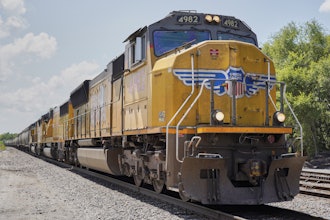Most manufacturers have reliable primary suppliers from whom they acquire the bulk of the materials they use. But too high a reliance on one supplier for a critical resource can be disastrous if that provider is bought out, goes out of business, faces a labor disruption, or is hit with another shake-up beyond the manufacturer’s control. To survive, it’s essential that your business has pre-established and reliable alternatives available.
Enlisting second-tier suppliers is an important area of risk management, and it is something auditors examine when assessing compliance with Aerospace & Defense standards, such as AS9100. This article discusses the factors you should consider to ensure your relationships with reputable second-tier supplier relationships are strong.
Understanding Today’s A&D Environment
What makes second-tier relationships so important? The A&D industry has witnessed many changes in the past 20 years that have disrupted the traditional supply-chain model. According to an A.T. Kearney analysis, four specific trends have shaped the U.S. A&D industry in recent years:
- Civilian structural demand: There’s been an increase in demand for both maintenance, repair, and operations (MRO) and growing demand for next-generation assets.
- Macroeconomic and geopolitical environment: Western nations face budgetary pressures from their governments. Countries like Iran, China and North Korea are threatening the status quo, while non-government-backed political organizations now have enough influence to affect change within the industry.
- Defense structural factors: Budget restrictions in the U.S. have restricted industry growth, despite the U.S. accounting for roughly half of all worldwide demand.
- Technology: Emerging technologies have redefined value within the supply chain, while technological advancements have led to increased durability and serviceability of A&D products.
The A&D industry also faces competition from emerging markets where cheaper labor and overhead costs are attractive to investors. It’s these dispersed suppliers that should be the focus for companies’ relationship-building efforts.
The Benefits of Second-Tier Suppliers
Having direct and strong relationships with second-tier suppliers is always a good idea. This way, procurement can skip first-tier suppliers if they prove unable to supply what’s needed. For A&D companies, the ability to adapt the supply chain when needed can save projects from falling behind schedule.
Specifically, having relationships with multiple suppliers can yield the following benefits:
- Diversified risk: To reduce the risk of order default and supply chain disruptions from one supplier, companies may decide to order small quantities from multiple suppliers, minimizing the damage should any one of them fall short on delivery.
- Direct relationships: First-tier suppliers can take most relationship management off of a company’s plate in dealing with lower tiers. However, this also means companies are dependent upon relationships over which they have little. If things go south between a first-tier supplier and a second-tier supplier, your business may bear the brunt of the fallout. Direct contact with second-tier suppliers can minimize this. It can also be useful when sourcing materials for engineer-to-order jobs that are outside of your usual supply relationship.
- Increased efficiency: Regional and second-tier suppliers may be able to fulfill orders faster due to their relationships with local partners.
- Lower pricing: Working directly with second-tier suppliers may result in lower prices for components as overhead costs from a first-tier supplier wouldn’t exist.
- Discounts: Second-tier suppliers may offer discounts to their best customers to keep them from leaving for competitors.
The Drawbacks of Second-Tier Suppliers
Despite the appeal of second-tier suppliers, their relationships carry unique risks. Companies should consider the following when contemplating these relationships:
- Reputation: Just because a second-tier supplier is smaller doesn’t mean that their reputation isn’t important. A&D companies need to be aware of each vendor’s reputation, which may impact the level of communication and meeting deadlines with requested inventory.
- Uncontrollable risks: As with first-tier suppliers, second-tier suppliers carry their own set of risks that your company may not be able to predict, such as labor disputes, inability to deliver parts or dissolution.
- Ordering issues: Increasing your supplier list creates more contacts, orders, dates and invoices that your employees must handle. This opens up the potential for accidental double-ordering or missing components altogether if records aren’t kept up to date.
How to Build Strong Relationships
What makes for a healthy relationship between your organization and suppliers? Kelley Marchese, principal at Deloitte Consulting, lists four necessary attributes for supply-chain resilience:
- The ability to monitor events and patterns throughout the supply chain, including first- and second-tier suppliers.
- The ability to address and adapt to problems that occur in supply chains.
- The ability to trust suppliers’ processes and capabilities, along with the capacity to collaborate with them to identify risks, avoid problems and improve processes.
- Having policies and capabilities in place to ensure agreed-upon processes are followed.
These points can be applied specifically to relationships with second-tier suppliers by addressing the following concerns:
- Visibility: Have you discussed with your second-tier suppliers the kind of visibility you expect in regards to their procurement processes? Industry-standard procedures like first article inspection should be planned before moving forward.
- Flexibility: What kind of processes do your second-tier suppliers have in place to deal with supply-chain disruptions? Are they able to source parts from other local suppliers? Do they have a pulse on local politics and labor sentiment that could affect plant operations?
- Collaboration: How can you and your second-tier suppliers work together to improve risk management and improve procurement processes on both ends? Consider the technologies and processes you’ve used with first-tier suppliers and how they could apply to your second-tier relationships. Similarly, second-tier suppliers may be able to provide insight into order management from multiple sources.
- Control: What policies and capabilities do your second-tier suppliers have in place to ensure order fulfillment and quality? Again, this could include sharing status reports, strengthening communication methods, and using resources you’ve developed with first-tier suppliers.
Every Relationship Matters
Every A&D company should have strong relationships with first- and second-tier suppliers alike. In fact, it's wise to have a secondary supplier on board from whom you buy around 10 percent of a material with the option to increase.
Second-tier suppliers can be a valuable resource when your first-tier providers face challenges of their own. Having a relationship with a reliable second-tier provider can be invaluable in certain situations. They aren’t a one-size-fits-all solution: second-tier suppliers carry their own set of risks, all of which can be boiled down to reputation. Relationships may matter, but reputation and demonstrated performance will illustrate the true value of these relationships.
Aaron Continelli is president of Cre8tive Technology and Design.





















